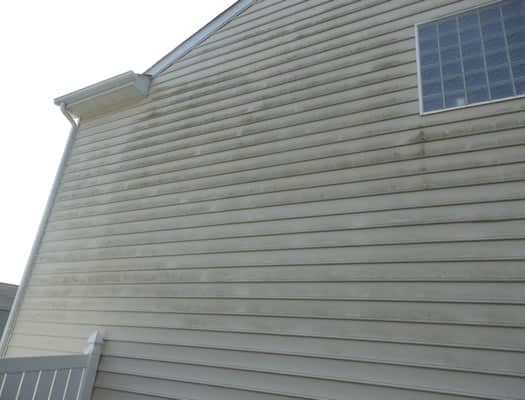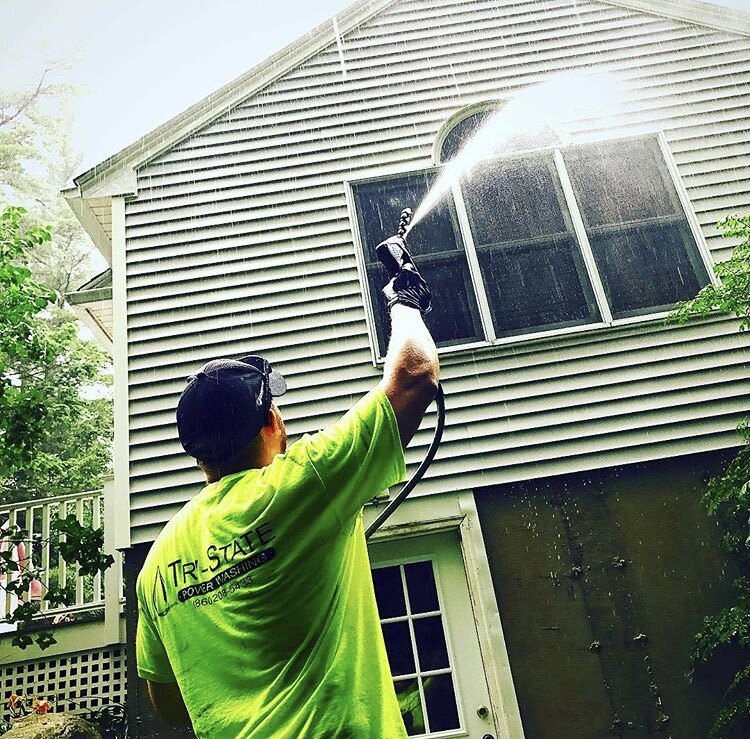Renew your exterior’s shine with expert House Washing.
Renew your exterior’s shine with expert House Washing.
Blog Article
Understanding the Secret Differences In Between Pressure Washing and Home Washing
The difference between pressure washing and residence washing is critical for property owners looking to keep their residential or commercial property's outside. While pressure washing employs high-pressure water jets to remove stubborn grime from durable surfaces, home washing uses a gentler method that incorporates eco-friendly cleansing agents to safeguard more delicate products.
Definition of Pressure Washing
Pressure washing, frequently referred to as power washing, entails the usage of high-pressure water spray to eliminate dust, crud, mold, mildew, and other impurities from different surfaces. This technique is especially efficient on tough surface areas such as concrete, block, and stone, making it an optimal choice for cleaning up driveways, outdoor patios, and sidewalks. The procedure typically makes use of specific equipment that generates water pressure ranging from 1,500 to 3,000 psi or even more, ensuring reliable cleansing also in challenging conditions.
Pressure washing is not restricted to exterior surface areas; it can additionally be used for numerous applications, consisting of lorries, exterior furnishings, and devices. It is vital to note that the strength of the water pressure can possibly harm fragile surfaces, such as wood or repainted finishes, if not managed properly. Selecting the ideal pressure setup and nozzle type is vital for optimum outcomes.
Along with surface area cleansing, pressure washing can likewise play a significant function in preserving the durability of structures by preventing the accumulation of dangerous contaminants that can lead to damage. In general, pressure washing works as a powerful device for boosting sanitation and maintaining the honesty of numerous surface areas.
Meaning of House Washing
Residence washing refers to the comprehensive cleaning of a home's outside surfaces, utilizing a combination of low-pressure water and specialized cleansing solutions. This approach is made to get rid of dust, mold and mildew, mold, algae, and various other contaminants that accumulate over time, protecting the visual appeal and architectural honesty of the residential or commercial property.
Unlike pressure washing, which uses high-pressure streams of water, home washing highlights using lower pressure to avoid damage to fragile surfaces such as siding, roof, and painted surfaces. The cleansing remedies made use of are generally naturally degradable and developed to successfully tackle particular issues, making sure a thorough tidy without endangering the environment or the stability of the materials being dealt with.
Residence washing is especially helpful for maintaining the look of vinyl, timber, stucco, and block outsides. Normal residence washing not only boosts curb allure yet also adds to the durability of a home's outside surface areas by reducing the effects of damaging microorganisms and toxic wastes. House owners are motivated to schedule home washing occasionally to ensure their residential or commercial property remains in optimum condition, hence safeguarding their investment.
Trick Methods Used
In the realm of exterior cleaning, various methods are employed to attain optimal results during home washing. The key approach includes soft washing, which uses low-pressure water combined with specialized cleaning options. This technique efficiently gets rid of dust, algae, and mildew without harmful fragile surface areas such as wood or repainted siding.
An additional trick technique is using a surface area cleaner attachment, which is specifically reliable for level surfaces like patio areas and driveways. This tool offers uniform cleaning by making use of turning jets that cover a larger area, making sure constant outcomes.
Chemical application is also critical in residence washing. Cleansers such as salt hypochlorite or eco-friendly detergents are typically made use of to damage down tough spots and organic development. House Washing. Proper dilution and application approaches are vital to lessen any potential damages to plants or landscaping
Ideal Surface Areas for Each
Pressure washing, which utilizes high-pressure water jets, is ideal matched for hard, resilient surface areas that can hold up against intense pressure. These surfaces commonly accumulate hard stains, such as oil, oil, and mold, which need the read this post here powerful cleaning action given by pressure washing.
On the various other hand, home washing commonly employs a softer method, utilizing low-pressure water integrated with specialized cleaning agents. This method is suitable for more fragile surface areas, including painted timber, plastic home siding, and stucco. Residence washing efficiently eliminates dust, pollen, and mold without taking the chance of damage to the outside surface. It is specifically helpful for areas where delicate materials are included, as it reduces the possibility for cracking or removing paint.
Benefits and Drawbacks

On the other hand, residence washing utilizes a gentler technique, typically using a mix of low-pressure water and cleansing remedies. This method is much safer for repainted surfaces, home siding, and roofings, aiding to preserve their integrity. The primary downside of house washing is that it might not get rid of deeply embedded dirt or persistent stains as successfully as pressure washing, which can need even more time and multiple applications.

Final Thought
In summary, pressure washing and home washing serve unique objectives in exterior cleaning (House Washing). Pressure washing utilizes high-pressure water streams, making it ideal for sturdy surface areas and reliable versus difficult stains.
Report this page